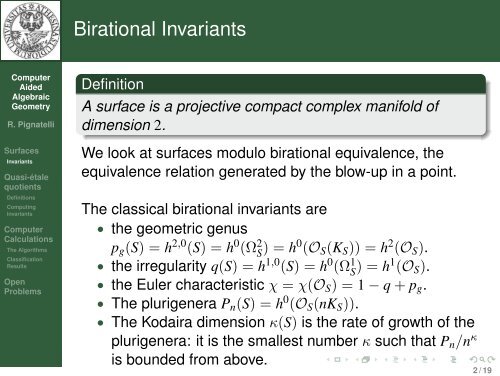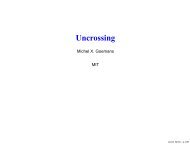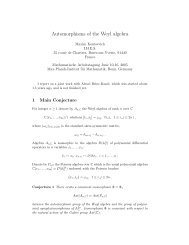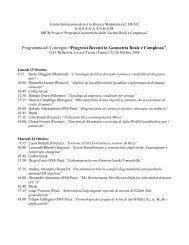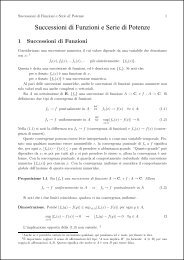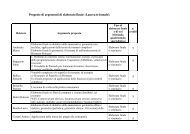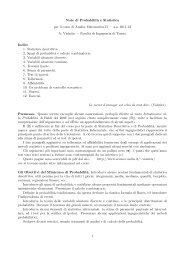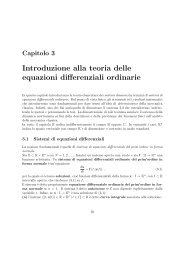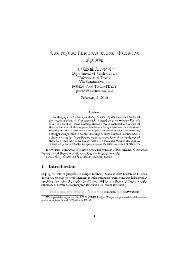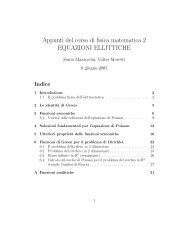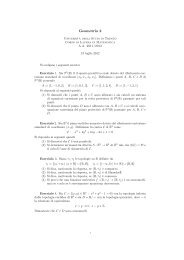Computer Aided Algebraic Geometry
Computer Aided Algebraic Geometry
Computer Aided Algebraic Geometry
You also want an ePaper? Increase the reach of your titles
YUMPU automatically turns print PDFs into web optimized ePapers that Google loves.
Birational Invariants<br />
<strong>Computer</strong><br />
<strong>Aided</strong><br />
<strong>Algebraic</strong><br />
<strong>Geometry</strong><br />
R. Pignatelli<br />
Surfaces<br />
Invariants<br />
Quasi-étale<br />
quotients<br />
Definitions<br />
Computing<br />
invariants<br />
<strong>Computer</strong><br />
Calculations<br />
The Algorithms<br />
Classification<br />
Results<br />
Open<br />
Problems<br />
Definition<br />
A surface is a projective compact complex manifold of<br />
dimension 2.<br />
We look at surfaces modulo birational equivalence, the<br />
equivalence relation generated by the blow-up in a point.<br />
The classical birational invariants are<br />
• the geometric genus<br />
p g (S) = h 2,0 (S) = h 0 (Ω 2 S ) = h0 (O S (K S )) = h 2 (O S ).<br />
• the irregularity q(S) = h 1,0 (S) = h 0 (Ω 1 S ) = h1 (O S ).<br />
• the Euler characteristic χ = χ(O S ) = 1 − q + p g .<br />
• The plurigenera P n (S) = h 0 (O S (nK S )).<br />
• The Kodaira dimension κ(S) is the rate of growth of the<br />
plurigenera: it is the smallest number κ such that P n /n κ<br />
is bounded from above.<br />
2 / 19


